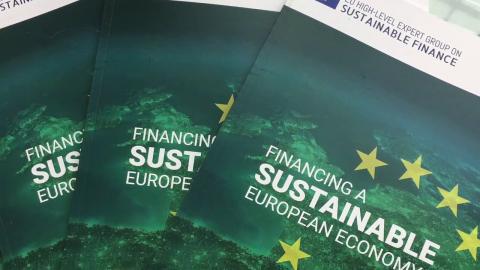The European Commission’s Technical Expert Group published a series of reports yesterday, on Taxonomy and the use of Taxonomy in the context of Sustainability.
The TEG report on a sustainable taxonomy is an important step in defining the criteria that will help to identify whether an activity is economically sustainable or not. This process of definition is a crucial pillar in the EU’s sustainable finance agenda, with the final framework also expected to be used as a basis for the EU Ecolabel and EU Green Bond Standard. The formation of the criteria, and the activities that are subsequently included/excluded is therefore key to formulating the EU’s approach to a transition to a low-carbon economy.
Key Highlights
- Use of the taxonomy should be voluntary – the TEG suggests that investors use the EU framework where they are looking to invest in taxonomy-eligible activities, or disclose their own preferred approach to determine environmentally sustainable activities – where products are marketed as such. The voluntary use of the framework has divided political opinion, with the Parliament calling for a comply or explain approach for the EU framework.
- Climate change mitigation defined through ‘greening of’ and ‘greening by’ – enabling inclusion of those activities that do not focus directly on environmental sustainability, but which allow an improved environmental performance in other sectors of the economy.
- Climate change adaptation defined through a two-step approach – assessing the negative physical impact of climate change on the underlying activity, and outlining how it will address any impacts, or ensure no further increase.
- Contribution to climate change adaptation is defined through guiding principles and screening criteria – including that the activity reduces all material physical climate risks to the extent possible and on a best effort basis.
- Use of the NACE industrial classification system as a sector framework – including the agriculture, forestry and fishing, manufacturing, electricity, water, sewage, ICT and buildings macro-sectors within this initial first phase. This use of the NACE system is cited as helping the taxonomy to broadly indicate the economic branches or industries where climate change mitigation or adaptation activities are being implemented, although recognising that in several cases a more granular classification is required.
- The technical screening criteria should have three components – principles, metrics and thresholds, allowing the use of both quantitative and qualitative conditions to be met.
Relevant Links
- Final report on EU taxonomy and a supplementary report on its use.
- Interim report on Climate Benchmarks and Benchmarks’ ESG Disclosures and a two-pager summarising the key aspects of the report.
- Final report on EU Green Bond Standard and a two-pager summarising the key recommendations.
The TEG will launch a public call for comments on the interim benchmarks report in the coming days and on parts of the taxonomy report by the beginning of July.
